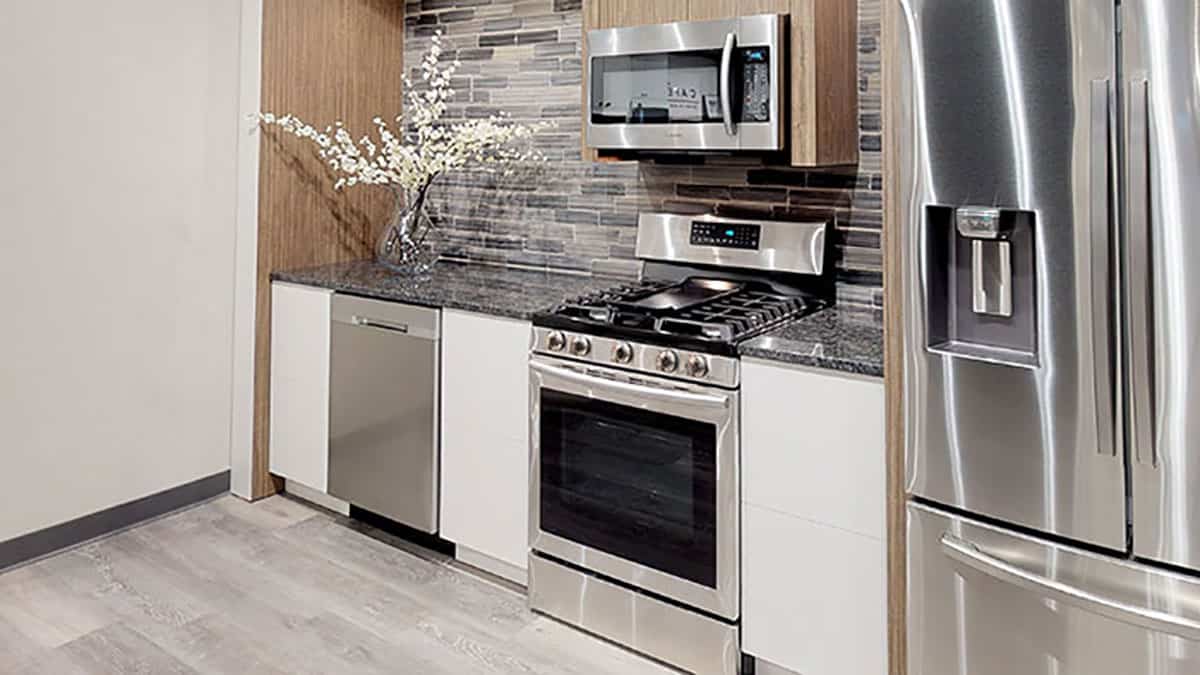The over-the-range microwave checks a lot of boxes in kitchen design.
It will centralize your cooking and remove the microwave from your counter.
Over-the-range microwaves are relatively inexpensive and look good over the matching stove.
It ticks off all the necessary criteria, except for one crucial aspect.
Unfortunately, an over-the-range microwave can be a big problem, depending on how you cook.
In this article, you will learn why NOT to buy the venerable over-the-range microwave and your best alternatives.
Let's dive in.
Looking for answers about Electric Cooking?
Short on time? Download our free Electric Cooking Buying Guide.
History of the Over-the-Range Microwave
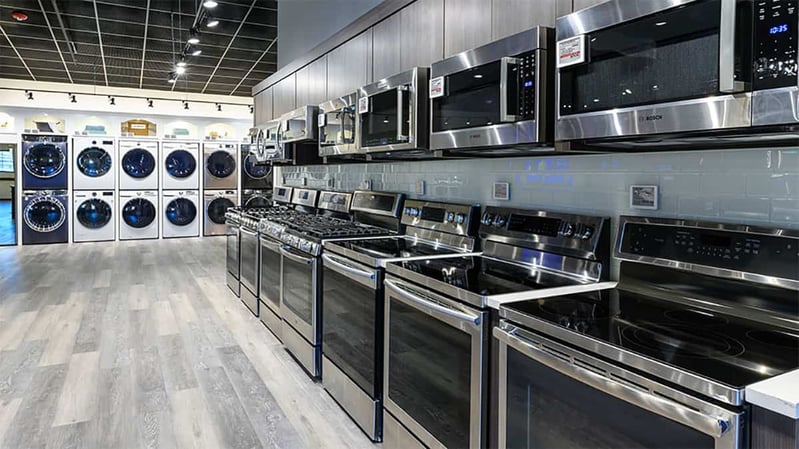
Raytheon created the first microwaves in the 1940s for $5,000, equivalent to $66,000 in today's dollars.
The over-the-range (OTR) microwave debuted in the late 1980s.
GE was the first, but every manufacturer now markets at least one model.
Sharp started producing an over-the-range microwave with convection, so you have an extra oven.
GE also has their Advantium "cooking by light" technology in their microwaves.
Over-the-Range Microwave Installation

Specifications
The over-the-range microwave has not changed much since I first saw it in 1988.
The typical specs are 16.2" tall, 16.375" deep, and 30" wide to match the range.
Depth is a problem, as you will see.
Ventilation
You can vent it to the outside vertically or horizontally or make it ductless.
The average CFM (how many cubes of air are exhausted in a minute) is 300-400 CFM.
How to Install an Over-the-Range Microwave
Over-the-range microwave installation is not complicated, but you will need two people.
All the hardware is packed with the unit along with the bracket.
You install the bracket to the studs in the wall and then mount the microwave to the bracket.
Over-the-range microwaves use a standard 110-volt plug.
You may have to change the receptacle if you have an existing hood.
Typically, a hood is hard-wired, but the voltage is the same.
Why Consider Buying an Over-the-Range Microwave
1. It centralizes your cooking area and frees up counter space.
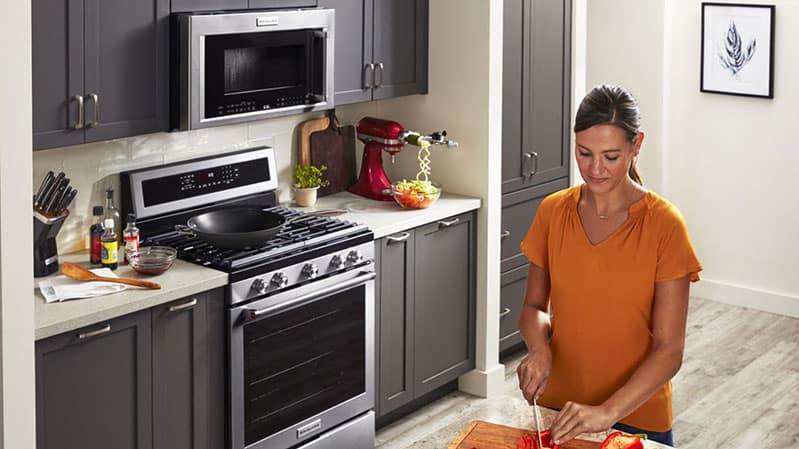
An over-the-range microwave clears up counter space by positioning it above the range.
Additionally, this eliminates the need to bend over, unlike with a conventional oven or microwave drawer.
When properly installed, you won't have to worry about the struggle of lifting a scalding hot dish over your head.
2. It's inexpensive.
You can buy an over-the-range microwave as low as $199 or less in some packages.
It is far cheaper than buying a range hood and separate countertop microwave for a total of $750 or more.
3. It's good looking.
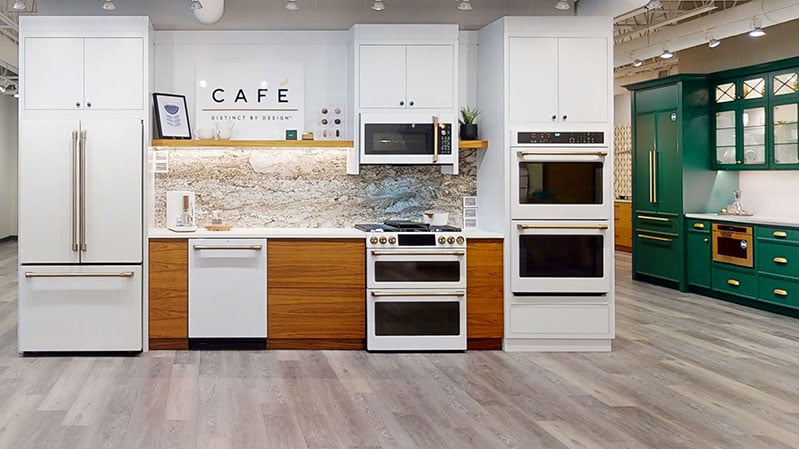
When you purchase the same brand for both your range and microwave, their style and handles will match.
Pro Tip: Although you may want a coordinated look with the stove, you don't have to buy an expensive over-the-range microwave. They are mostly the same for features.
Now, let's look at why you shouldn't buy an over-the-range microwave.
Why You Shouldn’t Buy an Over the Range Microwave: Especially If You Cook
1. Over-the-range microwaves have not changed.
I remember loving this product almost 35 years ago.
But it hasn't changed much since.
Recently, a manufacturer, Whirlpool, has made the over-the-range microwave worse by reducing the depth to just 12 inches.
They also have another over-the-range microwave reducing the height to 10 inches.
But the over-the-range microwave, other than those two soon-to-be hopefully discontinued models, has remained the same.
2. Gas stovetops have higher outputs.
Your stove, on the other hand, has changed quite a bit.
I remember GE announcing their new gas range with a 12,000 BTU power burner.
The other burners were 9,000 and 5000 BTU.
But now, ranges are far more powerful.
Let's look at a LG Studio slide-in gas range as an example.
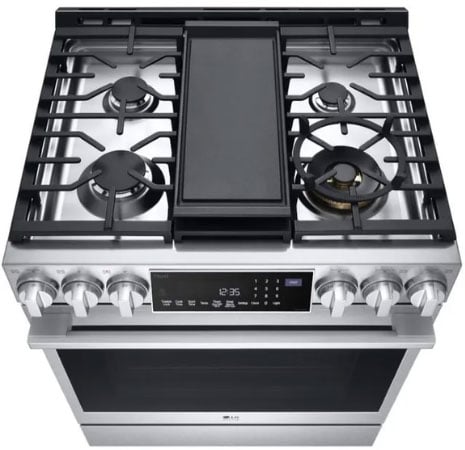
This range has 22,000 BTU and 20,000 BTU burners in the front.
Those burners are about 23 inches from the back of the stove, while an over-the-range microwave is about 16 inches deep.
So what happens?
All that heat, smoke, and grease, along with Nitrogen Dioxide, Carbon Dioxide, Carbon Monoxide, Formaldehyde, and particulate matter stay in your kitchen.
In 2024, your new energy-efficient windows will keep that brew inside your house longer.
Although over-the range microwaves are inexpensive and efficient, they are not good kitchen vents.
So, let me show you how to vent your stovetop properly. This is especially helpful for new construction.
How to Vent Your Kitchen Stovetop
Let me break down the various components of proper ventilation.
CFM
You may know it as blower speed. "CFM" stands for cubic feet per minute or how many cubes of air are exhausted per minute.
A 400 CFM over-the-range microwave exhausts 400 cubes of air.
Blowers can be mounted internally, externally, or inline in the duct.
How Much CFM Do You Need?
The answer to this common asked question varies depending on your cooking style and the type of stove you have.
Almost every gas stove will have two power burners in the front, so keep that in mind.
For high-output cooking tasks like stir-frying in a wok, grilling, or using a griddle, especially with larger professional-style ranges, I recommend opting for a ventilation capacity of 600 to 1200 CFM.
One Word of Caution: In Massachusetts and many other states, you must have make-up air or fresh air return on any vent over 400 CFM.
Typically, make-up air is placed through your HVAC system. We have other articles on make-up air, which I will leave below.
Capture Area

Capture is a frequently overlooked component of ventilation.
It's just the depth, but the smoke is chambered and then exhausted.
However, the smoke will billow past a powerful yet shallow hood into your kitchen.
The average hood is 21-24" deep, whereas the over-the-range microwave is only 16".
An over-the-range microwave, characterized by its below-average CFM and shallow capture area, may struggle with ventilating more powerful front burners effectively.
So, consider purchasing a hood with at least a 23-inch depth.
Duct Run
Straight up (vertical) is the best way to exhaust your hood. It's where the smoke is already going.
Straight back (horizontal) is also ok.
However, bending the duct more than once will reduce the static flow of the exhaust.
Duct Size
Duct sizes should be a minimum of 6 inches round or bigger for large blowers.
Keep in mind, a 4-inch round duct is for a 180 CFM dryer exhaust, not a range.
Over-the-Range Microwave Alternatives
Range Hoods
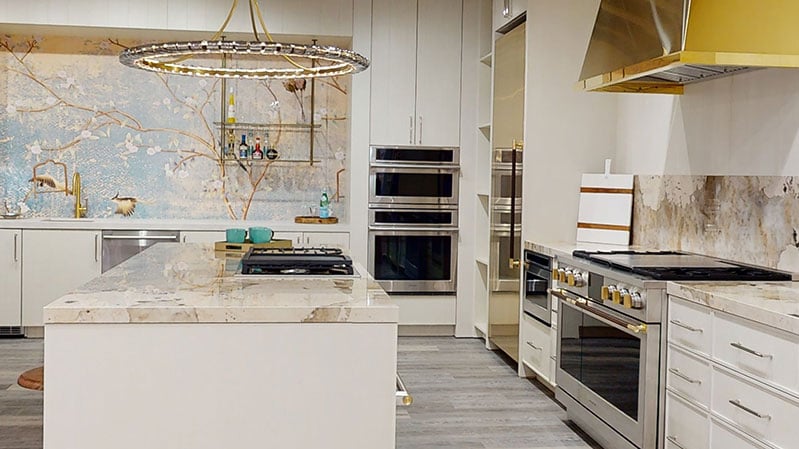
If you are reading this thinking I am trying to persuade you to buy a range hood, you are mostly right.
I want the air in your house to be clean and not polluted as many now are. I also want your house to not smell like your last dinner.
But many hoods still won't vent properly, even the new ones.
You need at least 23 inches in depth. With pro ranges, you also want a height of 16 inches.
You can buy a decent hood for $500 but still need the microwave.
Hoods will do the job way better than an over-the-range microwave, but you will pay more.
Pro Tip: Restaurants use stainless baffle filters so air moves through faster than charcoal types. You should look for baffles in your range hood as well.
Microwave Drawers

Microwave drawers slide out with a touch of a button and are great in spaces like islands and cabinets.
I have one in my house.
Microwave drawers are all produced by Sharp.
But with brands like JennAir, Thermador, and Bosch they tend to be better-looking and can be mounted flush to your wall.
However, they are far more expensive than an over-the-range microwave, especially when you add the cost of a hood.
Speed Oven

Speed ovens are convection microwaves.
They have the ability to cook using microwave technology, convection oven technology, or a combination of both settings.
Speed ovens, unlike microwave drawers, can be placed anywhere because they fold down and do not slide out.
The more powerful 220-volt products need to be placed in a wall cabinet.
You can cook in a speed oven.
The best is Miele because the controls are so easy to use.
JennAir, KitchenAid, and Bosch Benchmark have a decent speed oven as well.
Speed ovens have tons of functionality, but like a microwave drawer, it is much higher priced, and you still need a hood.
Under-Cabinet Microwave
GE has a 12-inch deep microwave designed to be placed under a cabinet.
It looks a bit dated, but not bad as a last resort.
You can build it into a cabinet as well.
Of course, you can always buy an inexpensive microwave and place it on the counter.
Induction Ranges and Cooktops
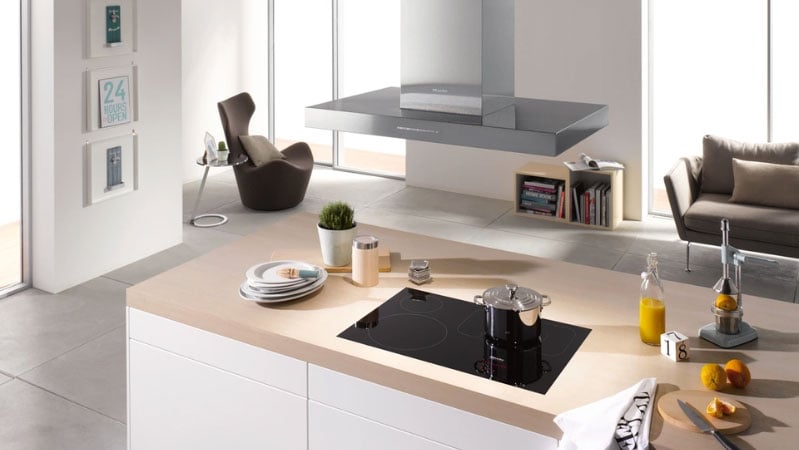
If you can't vent properly or still want an over-the-range microwave, electric and induction stovetops produce fewer gasses than gas-cooking.
As a result, utilizing induction cooking offers numerous benefits, such as:
- Boils faster: Way faster than even a pro burner
- Simmers lower: Gas blows out at a low temperature
- Most child-safe: Induction can only be activated by metal, so your (and my) toddler can not accidentally turn it on.
- Easiest to clean: The glass is not heated. Spills do not become encrusted into your cooktop
- Fewer HVAC costs: You don't have 60,000 BTUs of heat in your house
- Less venting required
Should You Buy an Over-the-Range Microwave?

The poor thing is trying but not capable of doing the job.
The over-the-range microwave will probably remain a staple in today's kitchens.
However, an over-the-range microwave can not handle the grease and smoke of today's higher-powered gas stoves.
If you do cook, buy a hood and place your microwave somewhere else in your kitchen.
Additional Resources
Get the Yale Ventilation Buying Guide with features, specs and how to vent any range properly. Well over 1 million people have read a Yale Guide.
Related Articles:


